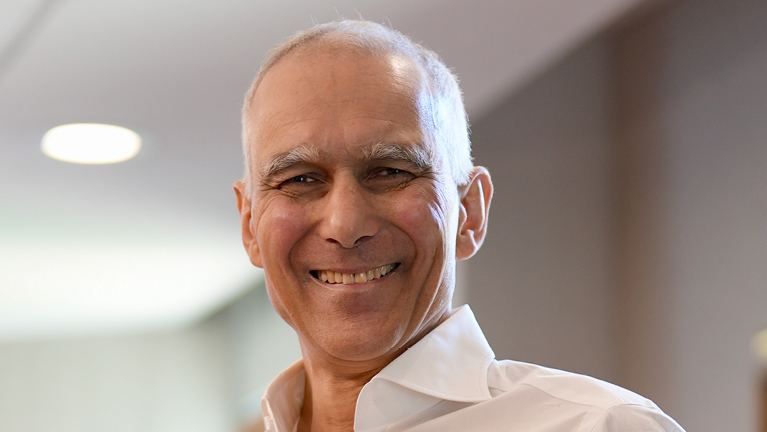A Synthesis for Quantum Dots, Born of Necessity, Unlocks a Nano-world of Opportunities
Nobel Laureate Moungi Bawendi
The Lester Wolfe Professor of Chemistry
Massachusetts Institute of Technology
Awarded Nobel Prize in Chemistry in 2023
Date: Thursday, April 25
Time: 6 p.m. ET
Location: Elliott Hall of Music
This event is free and open to the public with a general admission ticket.
Nobel laureate Moungi Bawendi grew up in France, Tunisia and the United States, attending West Lafayette schools while his parents taught at Purdue University.
Bawendi, now the Lester Wolfe Professor of Chemistry at the Massachusetts Institute of Technology, was awarded the 2023 Nobel Prize in chemistry in October for his pioneering work in producing quantum dots, which are small particles whose unusual quantum properties depend on their size. He shared the prize with Russian-born American physicist Aleksey Yekimov and American physical chemist Louis Brus.
In 1993, Bawendi and his collaborators concentrated on forming high-quality cadmium selenide quantum dots. Through these efforts, Bawendi revolutionized the chemical production of quantum dots, resulting in almost-perfect particles. This greater quality was necessary so these nanoparticles could be utilized in other types of applications in displays, as flexible electronics, tiny sensors, thinner solar cells and encrypted quantum communication.
Bawendi has followed an interdisciplinary research program that has probed the science and technology of chemically synthesized nanostructures. He was one of the initial developers of the field of colloidal quantum dots, with his work spanning from fundamental studies of nanomaterials to their applications.
His laboratory at MIT has advanced applications of nanomaterials for light emission, photodetection, spectral sensing and solar energy harvesting. His group has advanced novel tools for in vivo imaging. His work has included:
- The development of methods for synthesizing, characterizing and processing quantum dots, magnetic nanoparticles and J-aggregates.
- The study of the fundamental optical and magnetic properties of nanostructures using a variety of spectroscopic methods, including the development of photon correlation tools to examine single nanoscopic emitters.
- Incorporating quantum dots, magnetic particles, J-aggregates and thin film materials into optical and electronic device structures.
- Developing optical tools and probes, including nanoparticles and other imaging agents, for biomedical imaging.
Bawendi’s mother, Helene Baouendi, was an assistant professor of computer information systems at Purdue from 1985-88. His father was renowned mathematician M. Salah Baouendi, who became a full professor at Purdue in 1973 and served as department head from 1980-87 before joining the University of California, San Diego, in 1988.
Bawendi received a bachelor’s degree in 1982 and a master’s degree in 1983 from Harvard University before earning a PhD from the University of Chicago in 1988. He is a fellow of the American Association for the Advancement of Science, a fellow of the American Academy of Arts and Sciences, and a member of the National Academy of Sciences.
He joined Bell Laboratories for two years of postdoctoral research, where Bawendi first began studying nanomaterials alongside Brus. Bawendi joined MIT’s faculty in 1990, becoming an associate professor in 1995 and professor in 1996.
The 1978 West Lafayette Sr. High School graduate was inducted into the school’s Wall of Pride in 2022.
It (the 2023 Nobel Prize in chemistry) is an amazing result for the quantum-dot community. The theoretical frameworks provided by Brus and Ekimov were made into a reality with Bawendi’s seminal paper in 1993, from which this now-mature science sprung.
Mark Green, physicist at King’s College London, said in Nature in October 2023
